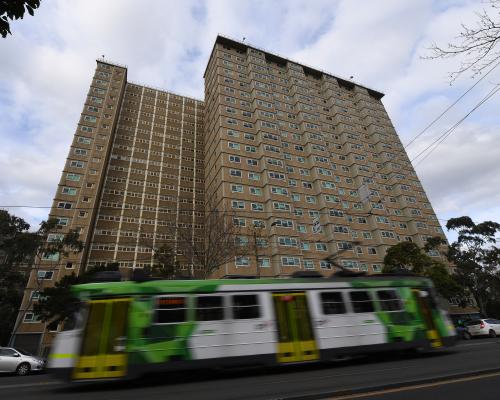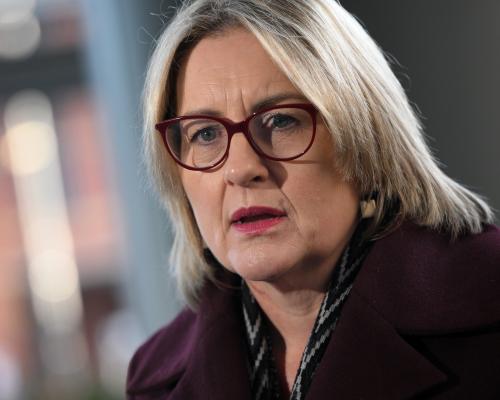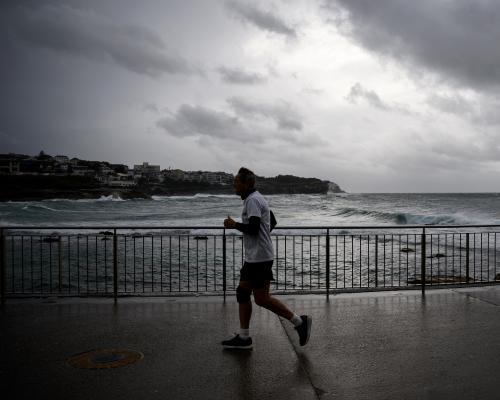
An engineer who helped build Melbourne’s public housing towers in the 1960s has condemned the Victorian government’s plan to demolish them, saying it’s expensive, unnecessary and environmentally irresponsible.
Gerry Noonan, who worked on most of the city’s 44 towers, told a Victorian parliamentary inquiry into their redevelopment they should be refurbished and upgraded instead – citing the financial cost and carbon impact of demolition and rebuilding.
“It would be sinful to knock those buildings down. They’re icons,” he told the inquiry on Wednesday.
Under the state government’s plan, announced by then premier Daniel Andrews in September 2023, all 44 towers will be demolished and redeveloped by 2051, starting with three occupied towers in Flemington and North Melbourne and two unoccupied redbrick towers in Carlton.
While there will be 10% increased social housing across the sites, only the towers in Carlton will return as public housing, thanks to federal funding.
The rest will be managed by community housing providers, which advocates have previously warned the inquiry could lead to higher rents and weaker tenant protections.
The department of families, fairness and housing and Homes Victoria told the inquiry on Wednesday the towers had to be demolished as they were outdated, unsafe and energy-inefficient.
Peta McCammon, the department’s secretary, said many had failed key standards including accessibility, sustainability, ventilation, noise and private open space. She said they would be unsafe in the event of fire or seismic events.
While some issues could be fixed, she said the cost would “far exceed the benefit” and residents would still need to relocate.
The department’s presentation said pipe walls in some larger towers had eroded from 2mm to as thin as 0.2mm, with 52 temporary patches applied in just the past three months.
About 3,000 homes are estimated to be at risk due to failing sewer stacks with Martin McCurry, the asset manager at Homes Victoria, telling the inquiry around 20km of sewers “need to be replaced”.
Simon Newport from Homes Victoria said the towers were only designed “to run for about 50 years”. He confirmed condition reports and cost-benefit analyses had been completed but he could not provide them to the committee, as the government had asserted executive privilege over the documents.
Noonan, however, told the inquiry the problems with the towers were minor and fixable.
“I live in a house that was built 155 years ago, as do a lot of people in Melbourne, probably even longer than that. You get the odd problem, but it’s not a big deal certainly not to knock the whole building down over it,” he said.
Noonan rejected the claim that modern amenities, such as air conditioning, were required in all units.
“In Melbourne, you get 10 hot days a year, for God’s sake. You don’t need air conditioning,” he said.
Noonan also pointed a report by architecture firm of OFFICE, which released a proposal last year to retain and upgrade the Flemington estate and build five new mid-rises on existing car parks, saving the government $364m.
He was joined by architect Richard Cameron, who told the inquiry retrofitting could be done at a quarter of the cost of the government’s proposed redevelopment and would extend the buildings’ life by another 50 years.
Housing worker Jackson Payne, part of the Stop the Demo coalition, also queried the rationale for the redevelopment.
“Where is the evidence? I fail to understand that the solution to the housing crisis of today is to demolish the safety net of tomorrow – public housing,” he said.
Payne said community housing was run by “private organisations” who can decide “the types of people who deserve housing” and charge “higher rents” and “dodgy service fees”.
But Sarah Toohey from the Community Housing Industry Association Victoria refuted this, telling the inquiry: “There aren’t any differences public and community housing, renters have the same rights under the law”.
Victorian Public Tenants Association chief executive, Katelyn Butterss, told the inquiry she did not oppose the redevelopment but warned if the buildings did not remain in public hands “it is very possible that there will be no public housing close to the city in the future”.







